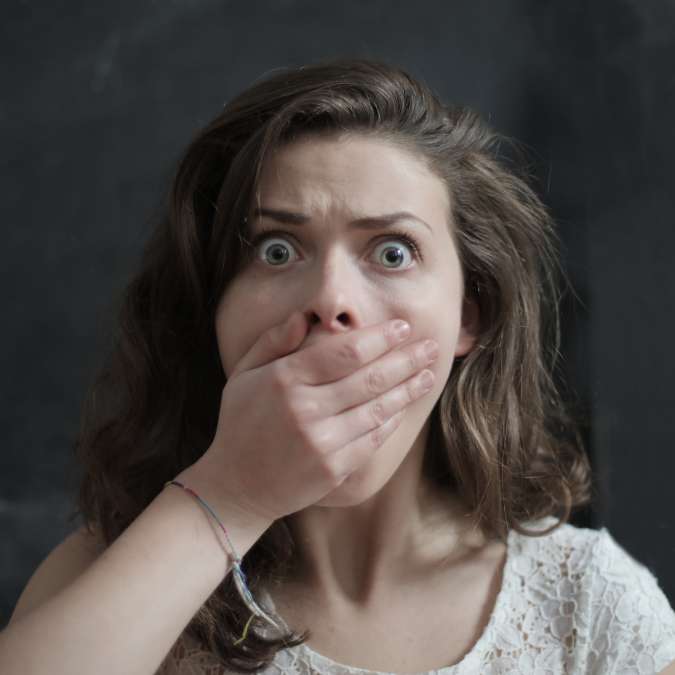
Every October, millions of people around the world deliberately seek out fear — watching horror movies, visiting haunted houses, and dressing up as terrifying creatures. But why do we enjoy being scared?
From a biological point of view, fear is a survival mechanism designed to protect us from danger. Yet paradoxically, during Halloween, we pay to experience it. Understanding this apparent contradiction requires diving into the worlds of neuroscience and psychology — to uncover what actually happens inside our brains and why fear can feel so good.
Let’s explore the science behind why we love to be scared, how our brains process fear, and what makes Halloween the perfect occasion to indulge in it.
🎃 The Paradox of Enjoying Fear
Fear is one of the most powerful human emotions. It triggers our fight-or-flight response, preparing our body to face or escape threats. From an evolutionary perspective, it has helped us survive predators, natural disasters, and other dangers.
But when we seek fear voluntarily — as in a haunted house or a horror movie — the story changes. We know we’re not in real danger, yet our brains still react as if we are. This combination of safety and stimulation is what makes fear thrilling rather than traumatizing.
In other words, we love fear when it’s controlled. When we know it’s temporary, predictable, and ultimately harmless.
🧠 What Happens in the Brain When We Feel Fear
The experience of fear starts deep within the brain, in a small, almond-shaped structure called the amygdala. This is the fear center, responsible for detecting threats and triggering the body’s automatic stress response.
Here’s how the process unfolds:
- Perception of a threat
When we see or hear something scary — a sudden scream, a shadow, or creepy music — sensory information travels to the amygdala. - Activation of the fight-or-flight response
The amygdala signals the hypothalamus, which releases stress hormones like adrenaline and cortisol. Heart rate increases, breathing quickens, and muscles tense. - The role of the prefrontal cortex
The prefrontal cortex, the rational part of the brain, evaluates the situation. If it realizes the threat isn’t real (for example, it’s just a movie), it helps the body calm down — allowing us to enjoy the “rush” without actual danger. - The release of dopamine
Interestingly, fear also activates the brain’s reward system, releasing dopamine, the “feel-good” neurotransmitter. That’s why some people feel exhilarated after a good scare.
🧩 In short: when fear is mixed with safety, the brain turns it into pleasure.
💥 The Adrenaline Rush: When Fear Becomes Fun
The intense sensations we experience when scared — the pounding heart, sweaty palms, and wide eyes — are caused by adrenaline, a hormone released by the adrenal glands.
Adrenaline:
- Increases heart rate and blood flow.
- Heightens alertness and energy.
- Boosts reaction time and focus.
In a dangerous situation, this response helps us survive. But in a safe environment — like watching a horror movie — the same physical reaction becomes thrilling instead of terrifying.
This is why people often describe scary experiences as “fun” or “exciting.” The mix of fear and euphoria produces a natural adrenaline high, similar to what athletes feel during extreme sports.
🧠 Neuroscientists call this phenomenon “excitation transfer” — when the physiological arousal from fear carries over into positive emotions like excitement or laughter.
😱 Why Some People Love Horror and Others Hate It
Not everyone enjoys being scared — and psychology helps explain why.
🧬 Personality Differences
Research suggests that people with higher levels of sensation-seeking — those who crave intense experiences — are more likely to enjoy horror movies and haunted attractions. These individuals are drawn to activities that trigger adrenaline and dopamine release.
Meanwhile, people who are naturally more anxious or sensitive to stress tend to dislike fear-inducing situations. For them, the same adrenaline rush feels overwhelming rather than exciting.
🧠 The Role of Control
Enjoyment of fear is also linked to perceived control.
When we know we can stop the movie, leave the haunted house, or remind ourselves it’s not real, the fear becomes manageable. That sense of control allows the brain to interpret fear as entertainment instead of threat.
In contrast, when fear feels uncontrollable — such as in a real emergency — the experience becomes traumatic, not enjoyable.
🧩 The Psychology of Curiosity
Humans are naturally curious about danger. Fearful experiences allow us to explore the unknown without actual risk. Watching a horror movie or hearing a ghost story gives us a safe way to confront death, evil, and chaos — the things we can’t control in real life.
🕯️ The Evolutionary Origins of Fear
From a biological standpoint, fear is essential to human survival. Early humans who were cautious and sensitive to danger had better chances of avoiding predators or natural threats.
The amygdala evolved as a warning system, scanning for potential harm. Interestingly, it can react before our conscious brain even understands the situation — explaining why we jump at sudden sounds before realizing they’re harmless.
However, as civilization made daily life safer, humans began to seek artificial sources of fear — storytelling, myths, and eventually horror films — as a way to simulate danger and feel alive.
🎭 In essence, fear evolved from a survival tool into a form of entertainment.
👻 Why Halloween Makes Fear So Enjoyable
Halloween offers the perfect psychological and cultural context for fear to become fun.
🧙♀️ Safe Context
Everyone knows Halloween scares are staged — haunted houses, spooky decorations, and jump scares in movies are expected. This makes fear predictable, and therefore, pleasurable.
🎭 Social Connection
Halloween is also a collective experience. Being scared together — whether at a horror movie or during trick-or-treating — releases endorphins and fosters social bonding.
Psychologists call this “communal coping”: sharing fear with others reduces anxiety and strengthens relationships. It’s the same reason why people laugh after a jump scare — it’s relief mixed with connection.
🍬 The Reward Factor
After the fright comes the fun — candy, parties, and laughter. The brain associates the scary experience with positive reinforcement, reinforcing the desire to repeat it next year.
🧩 Fear as a Psychological Playground
Fear gives us a unique psychological playground — a space to explore deep emotions without real danger.
🔮 Confronting the Unknown
Many psychologists believe people enjoy fear because it allows them to face mortality and the mysteries of life in a symbolic way.
Horror stories often deal with universal fears:
- Death 👻
- Darkness 🌑
- Isolation 🚪
- The supernatural 🕯️
By experiencing these themes safely through entertainment, people gain a sense of mastery over them.
💀 Catharsis and Emotional Release
Fear also serves as a form of catharsis — a way to release built-up tension or anxiety. When we scream during a horror scene or jump at a loud noise, we physically release stress.
That’s why many people say they feel relieved or lighter after watching a scary movie. The experience allows the brain and body to process and discharge fear in a healthy, controlled manner.
🧬 The Neuroscience of Pleasure in Fear
One of the most fascinating findings in neuroscience is that fear and pleasure activate overlapping brain regions — including the amygdala, nucleus accumbens, and ventral tegmental area (VTA).
When fear is experienced in a safe setting, the brain’s pleasure centers interpret the physiological arousal as excitement. Dopamine levels rise, creating sensations of joy, euphoria, or thrill.
This explains why roller coasters, horror films, and haunted houses all trigger similar emotional highs — even though they’re technically “scary.”
🧠 In other words, our brain confuses fear with fun — as long as we know we’re safe.
🔥 How the Body Reacts: The Biochemistry of a Scare
Let’s break down the biological cocktail that makes fear so addictive:
- Adrenaline: boosts alertness, energy, and focus.
- Cortisol: heightens awareness and prepares the body for action.
- Dopamine: produces pleasure and motivation.
- Endorphins: reduce pain and create euphoria.
Together, these chemicals create a powerful emotional high — a mix of tension, excitement, and relief. It’s the same mechanism that keeps thrill-seekers coming back for more.
That’s why after the initial scream or jump, most people laugh. The body’s rapid transition from fear to safety produces a joyful release of energy.
🧛♂️ Fear in Pop Culture: Why Horror Never Dies
The popularity of fear-driven entertainment — from Psycho to The Conjuring to Stranger Things — shows how deeply rooted this fascination is.
Psychologists argue that horror appeals to basic human instincts:
- Curiosity about evil and death.
- Empathy for survivors and heroes.
- The thrill of suspense and uncertainty.
Neuroscience confirms that suspenseful storytelling keeps the brain in a state of pleasant anticipation, maintaining dopamine levels and emotional engagement.
That’s why even after a terrifying scene, people often want more — the fear-reward loop keeps them hooked.
🌙 The Takeaway: Fear Is Not the Enemy
Halloween reminds us that fear isn’t always something to avoid — it’s something to understand and even embrace.
When experienced safely, fear can:
- Strengthen social bonds 🤝
- Improve stress resilience 💪
- Boost mood and confidence 😄
- Provide emotional release ❤️
Far from being purely negative, fear is a complex, deeply human emotion — one that connects biology, psychology, and culture.
So this Halloween, when your heart races and your palms sweat as you walk through a haunted house or watch a jump scare on screen, remember: your brain isn’t punishing you — it’s rewarding you.
You’re alive, alert, and fully present. And that’s the real magic of being scared. 👻🧠🎃
Sources:
- American Psychological Association: The Science of Fear and Why We Like It (2024)
- Smithsonian Magazine: Why People Enjoy Being Scared (2023)
- National Geographic: The Neuroscience of Fear (2024)
- BBC Science Focus: What Happens in the Brain When We’re Scared (2024)
- Harvard Health Publishing: Fear, Stress, and the Body’s Response (2023)

